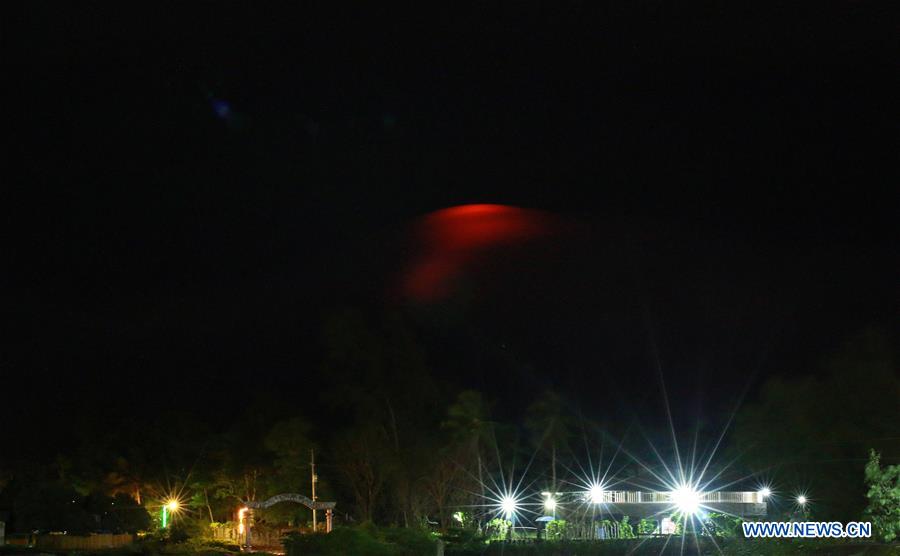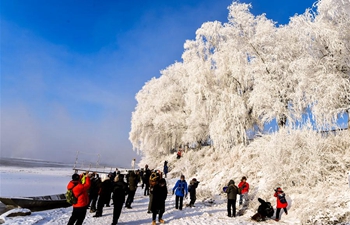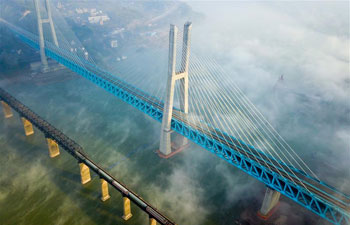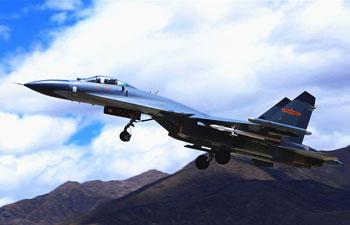An orange glow is seen on the night sky over the Mayon Volcano as it begins to spew lava from its crater in Albay Province, the Philippines, Jan. 14, 2018. Nearly a thousand families living close to the Mayon Volcano evacuated from their homes as Philippine authorities raised its alert level of the Mayon volcano on Sunday for the second time in less than 24 hours from "increasing unrest" to "increased tendency towards eruption" within weeks or even days. (Xinhua/Stringer)
MANILA, Jan. 14 (Xinhua) -- Philippine authorities have ordered more than 900 families to evacuate as Mayon volcano continues to spew ash on Sunday.
Romina Marasigan, the spokesperson of the Philippine National Disaster Risk Reduction and Management Council (NDRRMC), said on Sunday that 919 families have been so far subjected to "mandatory evacuation" by local officials due to the "abnormal activities" of the volcano.
Marasigan could not immediately say the exact number of persons composing the 919 families evacuated but a family is usually composed of four to five members.
The Philippine Institute of Volcanology and Seismology (Phivolcs) recorded two phreatic or steam-driven eruptions on Sunday morning. The cone-shaped volcano in Albay province rumbled back to life around 5 p.m. Saturday, spewing ash plume around 2,500 meters high.
The institute said dust fell on several villages in the surrounding towns.
Phivolcs raised the alert level around the volcano following the series of phreatic eruptions, saying the volcano continues to exhibit signs of "increasing unrest" that could trigger more ash falls, rockfalls and landslides.
"This means that the current unrest is probably of magmatic origin, which could lead to more phreatic eruptions or eventually to hazardous magmatic eruptions," the institute said.
The Phivolcs has recorded at least three "phreatic eruptions" since Saturday afternoon.
On Saturday, the institute reported that the Mayon volcano spewed ashes in the air. On Sunday morning, Phivolcs said two more steam-driven ash explosions were recorded, producing grayish steam and ash plume.
The institute warned residents around the volcano to be vigilant and do not enter the 6-km radius of the volcano due to risks of "sudden explosions, rockfall and landslides."
It also warned pilots to avoid flying close to the volcano's summit as ash from the sudden eruption can be hazardous to aircraft.
Phivolcs data said Mountain Mayon has an elevation of 2.46 km and a base diameter of 20 km.
The institute said it has erupted 51 times for the past 400 years. In an 1814 eruption, roughly 1,200 people were killed and three towns were buried under mud and rock. It was Mayon volcano's most destructive eruption yet.
Tourists often flock to the Albay Province to witness glowing orange and red lava flowing out of the volcano's crater.


















